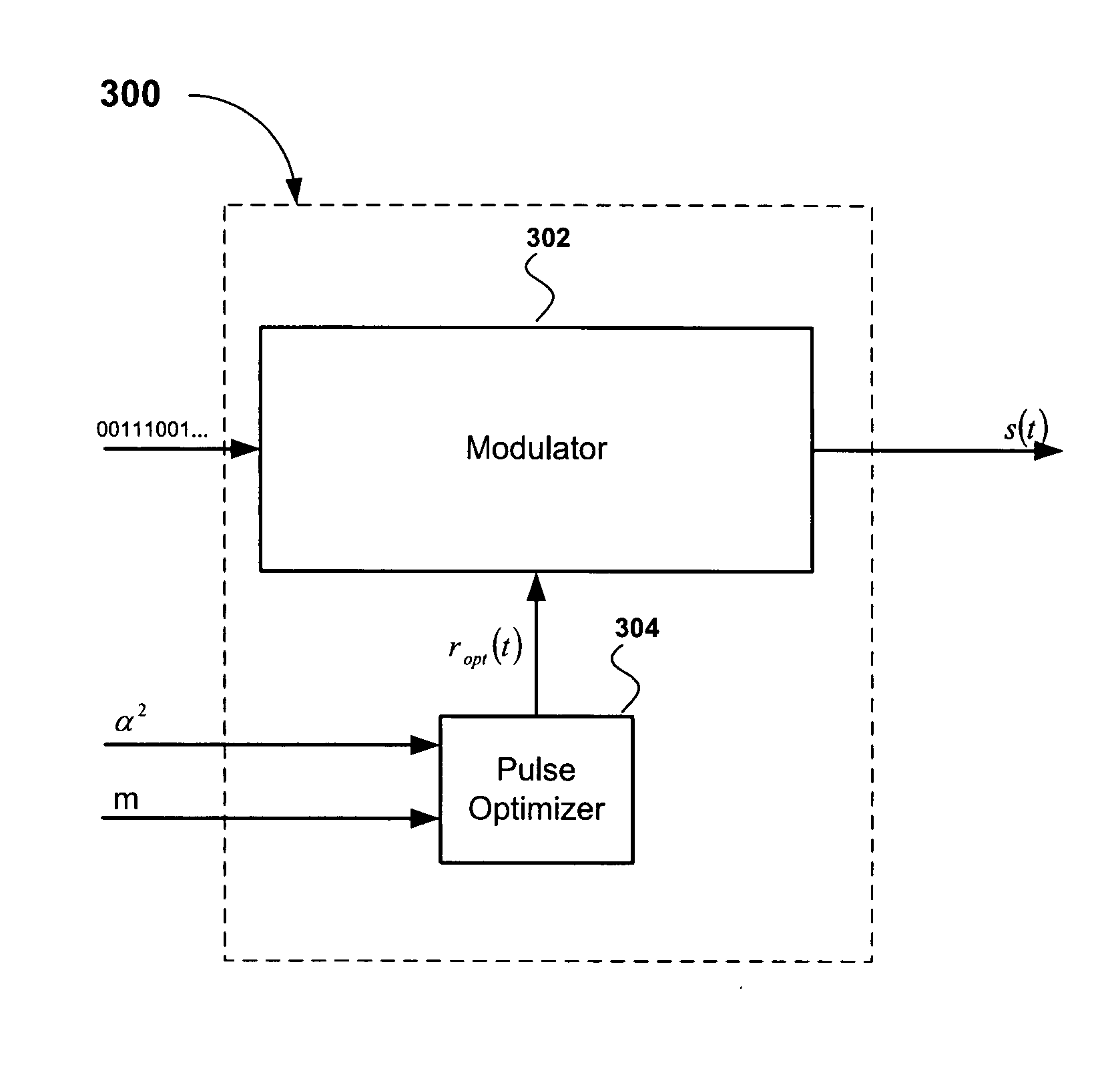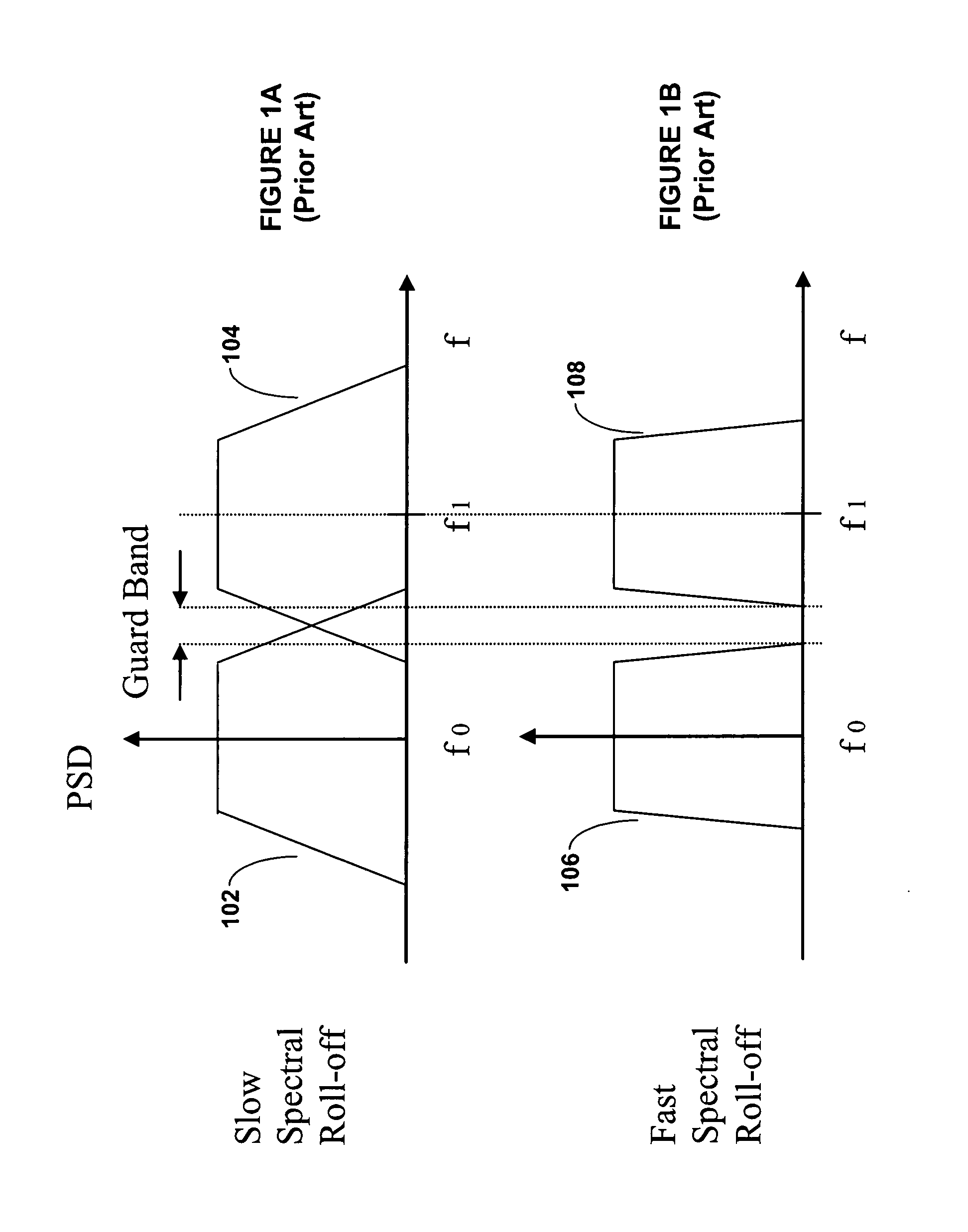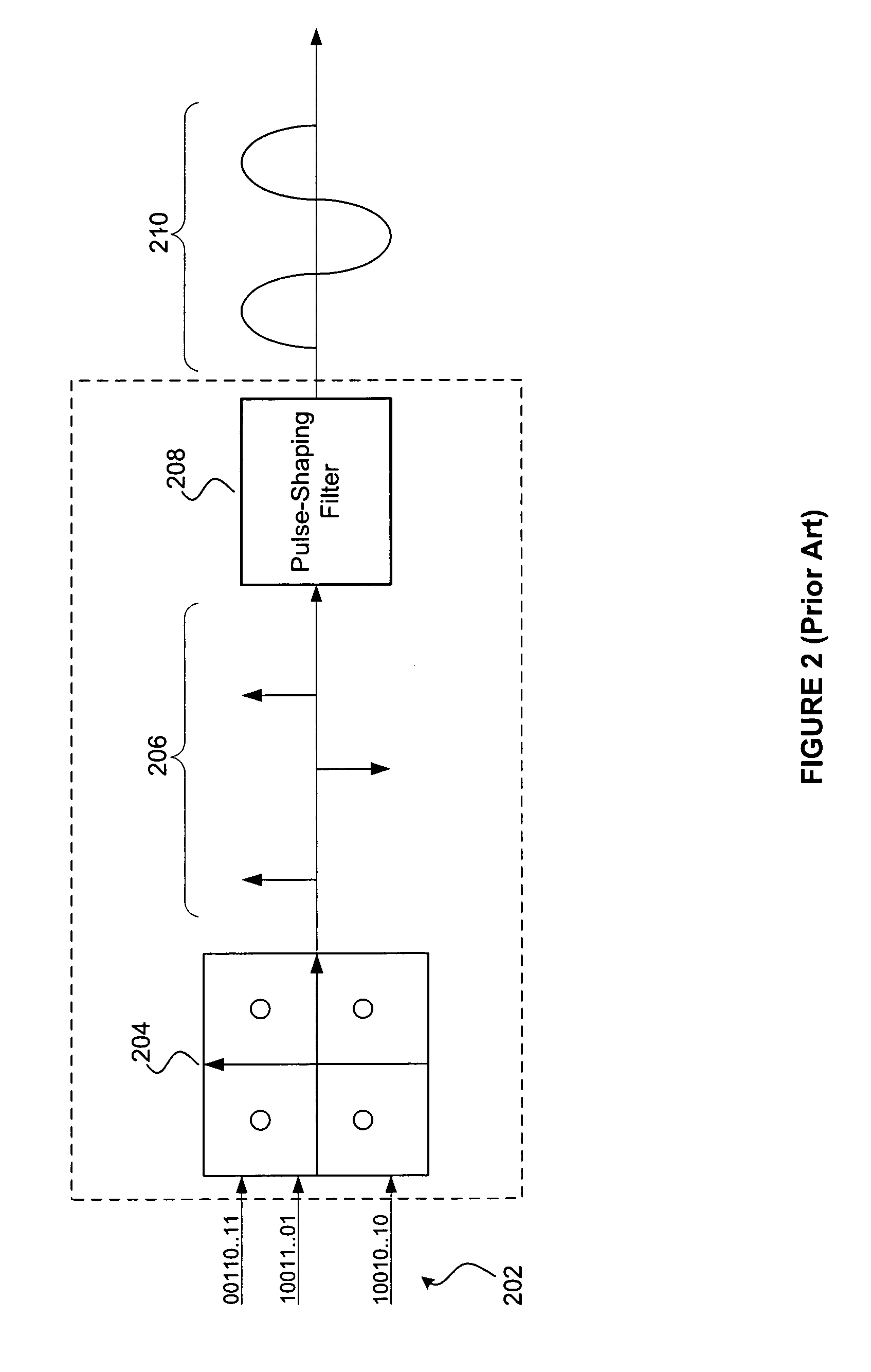Method and Apparatus for Pulse Optimization for Hardware Implementation
a pulse optimization and hardware technology, applied in the field of communication systems, can solve the problems of increasing the amount of information of wireless service providers, unable to be altered without violating the standard's specifications, and becoming even more difficult, so as to avoid excessive out-of-channel power generation, minimize error functions, and increase the level of in-channel distortion of communications signals
- Summary
- Abstract
- Description
- Claims
- Application Information
AI Technical Summary
Benefits of technology
Problems solved by technology
Method used
Image
Examples
Embodiment Construction
[0028]Referring first to FIG. 3, there is shown a block diagram of a pulse optimizing modulator apparatus 300, according to an embodiment of the present invention. The pulse optimizing modulator apparatus 300 comprises a modulator 302 and a pulse optimizer 304. The modulator 302 is configured to receive a digital message and generate a signal s(t), which is subsequently frequency up-converted and radiated by an antenna. As explained in detail below, the pulse optimizer 304 is configured to receive energy parameters α2 characterizing a predetermined adjacent channel leakage ratio (ACLR) and a finite pulse-length parameter m to compute an optimized pulse ropt(t) The optimized pulse ropt(t) is used by a pulse-shaping filter of the modulator 302 to generate the signal s(t).
[0029]FIG. 4 is a block diagram illustrating how the optimized pulse ropt(t) generated by the pulse optimizer 304 in FIG. 3 can be used in a communications transmitter 400, according to an embodiment of the present in...
PUM
 Login to View More
Login to View More Abstract
Description
Claims
Application Information
 Login to View More
Login to View More - R&D
- Intellectual Property
- Life Sciences
- Materials
- Tech Scout
- Unparalleled Data Quality
- Higher Quality Content
- 60% Fewer Hallucinations
Browse by: Latest US Patents, China's latest patents, Technical Efficacy Thesaurus, Application Domain, Technology Topic, Popular Technical Reports.
© 2025 PatSnap. All rights reserved.Legal|Privacy policy|Modern Slavery Act Transparency Statement|Sitemap|About US| Contact US: help@patsnap.com



